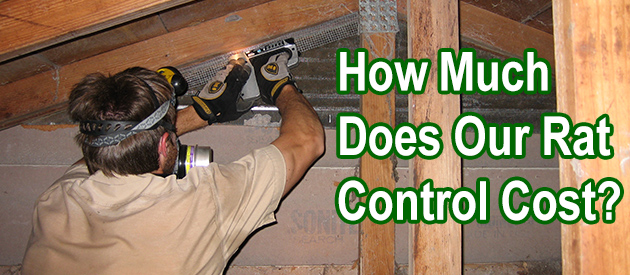Kings County, New York City Rat Control Situation:
Hi, I found your site very informative and helpful. I live in a ground floor duplex in New York City and we have had a rat problem in between our two floors since last August. The management company has sent an exterminator out several times-- to remove carcasses from the ceiling, place rodenticide in the ceiling, and fill any holes outside the apartment building. The problem is still going on almost a year later and we can't seem to figure out how they are getting in.
There is definitely less scratching and scurrying now compared to a few months ago, but the smell is consistently unbearable as something dies in the ceiling every few weeks to the point that I am ready to just move out. I have asked the management company to take a more proactive approach to the problem rather than reactive when I call and complain, perhaps gut the ceiling to expose the problem area, but they don't seem willing to do it. I can imagine there are a lot of droppings and urine in addition to at least 3-4 dead carcasses. Would the smell disappate if no more rats could get in (i.e. if we found and closed the access points), or is that something that will just continue to fester?
I am trying to make a case to the management that it is necessary for them to clean all the droppings and carcasses to restore the apartment to a sanitary environment. I noticed on your site you mentioned that rats can smell the droppings and urine of other rats, indicating the area is a safe habitat. I also think opening the ceiling might expose the access points. Apparently my unit is the only one of 47 in the building with a reported rat problem. Do you have any suggestions? Best regards, Alexandra
My response: Sounds like a very tough case. The entry holes into the building, or at least, the apartment, must be found and sealed! Check behind the oven, for example. The odor will disappear as soon as all rats are gone and any biomass dries up.
Thanks for the response! I got them to remove the entire ceiling and they said they removed some carcasses and closed a bunch of holes inside. I was on a business trip the past week and will see the result tonight. Fingers crossed the problem is resolved!
New York City Rat Control Tip of The Week
Why Are Mothballs And Ammonia Ineffective At Repelling Rats?
When it comes to repelling rats, the use of mothballs and ammonia are quite common, as many people consider using them to help keep rats away from their home. Despite how common these repellents are, their effectiveness is still questioned.
Mothballs and ammonia emit a strong smell that is believed to help repel rats by making them feel irritated, with the hope that the effects of the smell will make them lose interest in staying in a particular place and keep them away. The fact is, this might seem effective at the onset. But within a short time, these repellents lose their effectiveness and will no longer be able to repel rats.
Rats are covetous. When they see a need to stay around your home because there is abundant availability of food, they will ignore the effects of these repellents and continue with their activities. This simply means that if you choose to buy either mothballs or ammonia to repel the rats in your home, provided they see a greater need to stay, you will only be wasting your time because neither of the two repellents will help you in making your home rat-free.
Instead of using any of these repellents to help keep rats away from your home, you can focus more on making your home rat-proof. To do this, all you have to do is fix all the cracks and holes in your house which could serve as an entry point, get a very agile cat to help hunt them, and also keep your house and surroundings clean by removing trash. These are better ways to repel rats when compared with the use of mothballs and ammonia.


